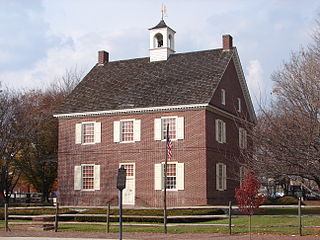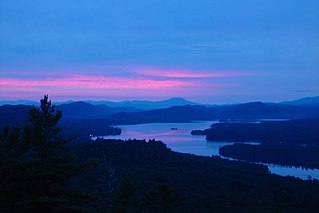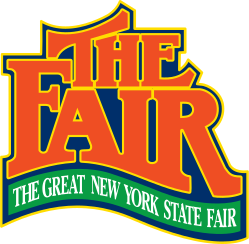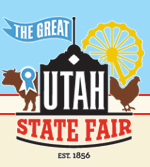
The World's Columbian Exposition was a world's fair held in Chicago in 1893 to celebrate the 400th anniversary of Christopher Columbus's arrival in the New World in 1492. The centerpiece of the Fair, held in Jackson Park, was a large water pool representing the voyage Columbus took to the New World. Chicago had won the right to host the fair over several other cities, including New York City, Washington, D.C., and St. Louis. The exposition was an influential social and cultural event and had a profound effect on American architecture, the arts, American industrial optimism, and Chicago's image.

A world's fair, also known as a universal exhibition or an expo, is a large international exhibition designed to showcase the achievements of nations. These exhibitions vary in character and are held in different parts of the world at a specific site for a period of time, typically between three and six months.

The Centennial International Exhibition of 1876, the first official World's Fair to be held in the United States, was held in Philadelphia, Pennsylvania, from May 10 to November 10, 1876, to celebrate the 100th anniversary of the signing of the Declaration of Independence in Philadelphia. Officially named the International Exhibition of Arts, Manufactures, and Products of the Soil and Mine, it was held in Fairmount Park along the Schuylkill River on fairgrounds designed by Herman J. Schwarzmann. Nearly 10 million visitors attended the exposition, and 37 countries participated in it.

Wooster is the county seat of Wayne County, Ohio, United States. Located in northeastern Ohio, the city lies approximately 50 mi (80 km) south-southwest of Cleveland, 35 mi (56 km) southwest of Akron and 30 mi (48 km) west of Canton. The population was 27,232 at the 2020 census. It is the largest in Wayne County, and the center of the Wooster micropolitan area. Wooster has the main branch and administrative offices of the Wayne County Public Library, and is home to the private College of Wooster. fDi magazine ranked Wooster among North America's top 10 micro cities for business friendliness and strategy in 2013.

York is a city in, and the county seat of, York County, Pennsylvania, United States. Located in South Central Pennsylvania, the city's population was 44,800 at the time of the 2020 census, making it the tenth largest city in Pennsylvania.

The Canadian National Exhibition (CNE), also known as The Exhibition or The Ex, is an annual event that takes place at Exhibition Place in Toronto, Ontario, Canada, on the third Friday of August leading up to and including Canadian Labour Day, the first Monday in September. With approximately 1.5 million visitors each year, the CNE is Canada's largest annual fair and the sixth largest in North America. The first Canadian National Exhibition took place in 1879, largely to promote agriculture and technology in Canada. Agriculturists, engineers, and scientists exhibited their discoveries and inventions at the CNE to showcase the work and talent of the nation. As Canada has grown as a nation, the CNE has reflected the growth in diversity and innovation, though agriculture and technology remain a large part of the CNE. For many people in the Greater Toronto Area and the surrounding communities, the CNE is an annual family tradition.

The Great Lakes region of North America is a binational Canadian–American region that includes portions of eight U.S. states: Illinois, Indiana, Michigan, Minnesota, New York, Ohio, Pennsylvania, and Wisconsin along with the Canadian province of Ontario. Quebec is at times included as part of the region because, although it is not in a Great Lake watershed, it encompasses most of the St. Lawrence River watershed, part of a continuous hydrologic system that includes the Great Lakes. The region centers on the Great Lakes and forms a distinctive historical, economic, and cultural identity. A portion of the region also encompasses the Great Lakes megalopolis.

Upstate New York is a geographic region consisting of the area of New York State that lies north and northwest of the New York City metropolitan area. Although the precise boundary is debated, Upstate New York excludes New York City and Long Island, and most definitions of the region also exclude all or part of Westchester and Rockland counties, which are typically included in Downstate New York. Major cities across Upstate New York from east to west include Albany, Utica, Binghamton, Syracuse, Rochester, and Buffalo.

The Exhibition of the Industry of All Nations was a World's Fair held in 1853 in what is now Bryant Park in New York City, in the wake of the highly successful 1851 Great Exhibition in London. It aimed to showcase the new industrial achievements of the world and also to demonstrate the nationalistic pride of a relatively young nation and all that she stood for. Jacob Aaron Westervelt, at that time Mayor of New York, was the President of the exhibition-committee. The general superintendent was Admiral Du Pont.

The New York State Fair, also known as the Great New York State Fair, is a 13-day showcase of agriculture, entertainment, education, and technology. With midway rides, concessionaires, exhibits, and concerts, it has become New York's largest annual event and an end-of-summer tradition for hundreds of thousands of families from all corners of the state. The first fair took place in Syracuse in 1841, and took permanent residence there in 1890. It is the oldest and one of the largest state fairs in the United States, with over one million visitors annually.

The Erie County Fair is a fair held in Hamburg in Erie County, New York every August. Based on 2018 attendance statistics, The Erie County Fair is the second largest fair in New York and the fourth largest county fair in North America, often drawing over one million in attendance.

The Wisconsin State Fair is an annual event held at the Wisconsin State Fair Park in West Allis, Wisconsin, a suburb of Milwaukee. The modern fair takes place in August and lasts 11 days.
Owenism is the utopian socialist philosophy of 19th-century social reformer Robert Owen and his followers and successors, who are known as Owenites. Owenism aimed for radical reform of society and is considered a forerunner of the cooperative movement. The Owenite movement undertook several experiments in the establishment of utopian communities organized according to communitarian and cooperative principles. One of the best known of these efforts, which were largely unsuccessful, was the project at New Harmony, Indiana, which started in 1825 and was abandoned by 1829. Owenism is also closely associated with the development of the British trade union movement, and with the spread of the Mechanics' Institute movement.

Central Illinois is a region of the U.S. state of Illinois that consists of the entire central third of the state, divided from north to south. Also known as the Heart of Illinois, it is characterized by small towns and mid-sized cities. Agriculture, particularly corn and soybeans, as well as educational institutions and manufacturing centers, figure prominently. Major cities include Peoria, Springfield, Decatur, Quincy, Champaign–Urbana, Bloomington–Normal, Galesburg, and Danville.
The Michigan State Fair is an annual event originally held from 1849 to 2009 in Detroit, the state's largest city. In 2009 the governor declined to fund it because of other priorities.

The American Institute of the City of New York, or, The American Institute of the City of New York for the Encouragement of Science and Invention was a civic organization that existed from ca. 1828 – ca. 1980.

John Stuart Skinner was an American lawyer, publisher, and editor. During his life he held several civil and government positions. He is associated with farming, domesticated animals, and agricultural management and his publishing interests specialized in outdoor sports, especially those dealing with horses.

The New England Manufacturers' and Mechanics' Institute flourished in the 1880s in Boston, Massachusetts. It existed as a rival to the long-established Massachusetts Charitable Mechanic Association. Individuals affiliated with the NEM and M Institute included businessman John F. Wood, James L. Little, John M. Little, Samuel R. Payson, William B. Merrill, and Frederick W. Griffin.

The Utah State Fair is held at the Utah State Fairpark in Salt Lake City, Utah, United States. The fairgrounds are listed on the National Register of Historic Places. The fair takes place each year starting on the first Thursday after Labor Day and lasts for 11 days.

















